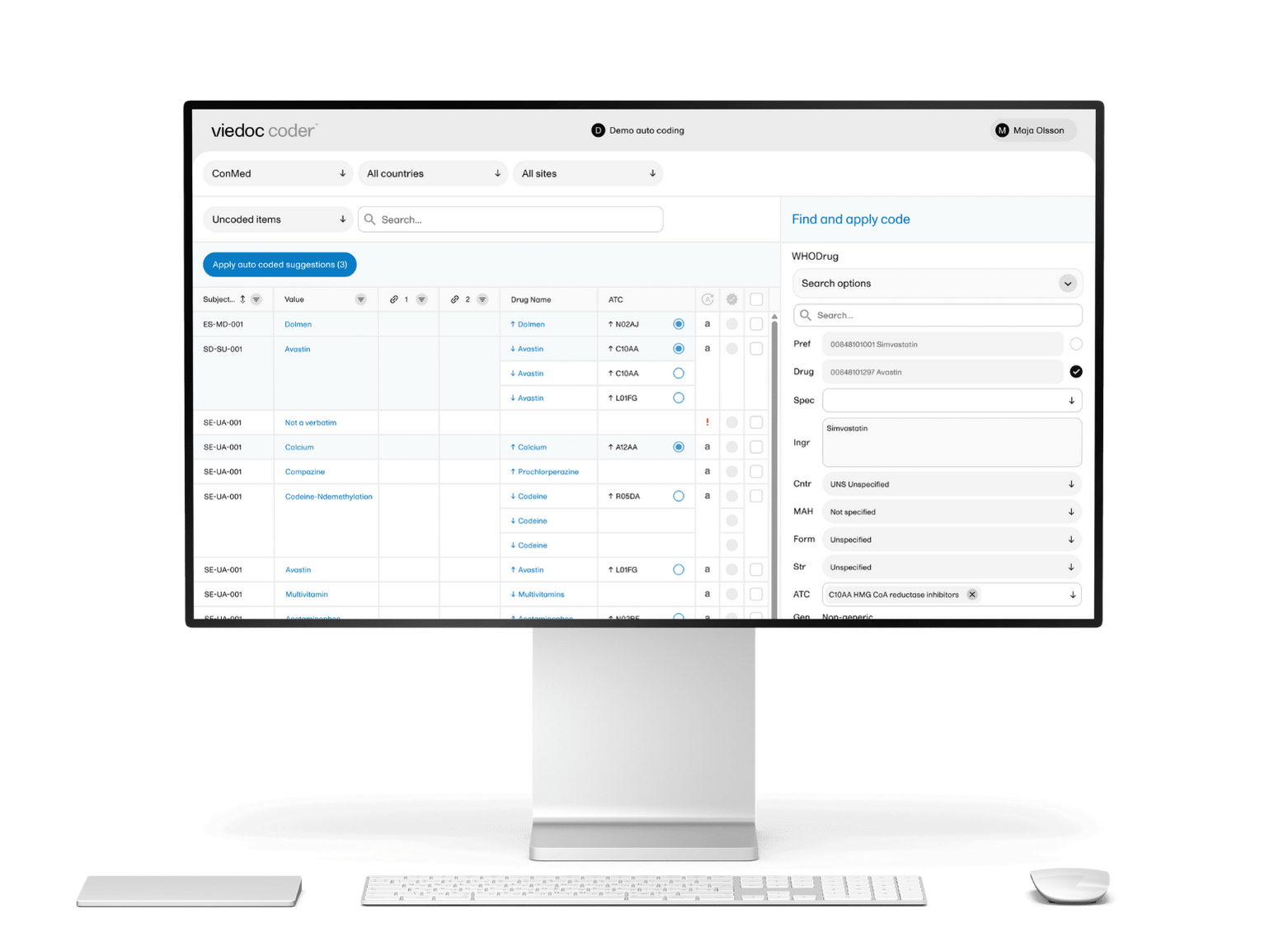What should be included in the TMF?
All documents and records that describe what is happening while the trial is running should be included, including any superseded versions of the same documents.
The TMF should be contemporaneous, reflecting the status of study activities. Additionally, it should include a complete audit trail that records all actions taken, any modifications made, and details of document access.
The TMF file structure and contents must be defined in advance. Many follow the CDISC standard structure that supports consistency and collaboration in clinical trials. The TMF must also include an overall index and table of contents indicating the location of each essential record. If a record is held by a vendor or at a site, this should be clearly documented.
User roles and privileges must be defined to ensure appropriate access. Unblinding information should not be visible to unauthorized users, and document segregation must be possible, including site-specific content.
The EMA states there should only be one study TMF per clinical trial to avoid synchronization issues. Alan Yeomans, Regulatory Affairs Manager at Viedoc explains “You want to be able to quickly roll out updates. For example, if there's a protocol amendment, it must go out to everyone all at once, and they must be able to access it, read it and sign it all at the same time.
Having one TMF means avoiding multiple copies of the same records. Alan states, “Multiple TMFs can lead to multiple truths, which is why there should be just one TMF per trial, because if you have multiple truths, you don't have any truth at all.”
“The TMF system has to be easy to use, or it won't be used.” Alan continues, “There should be support for filing of documents and records, and all the records should be findable, accessible, interoperable, and reusable. Finally, and very importantly, you need the ability to transition from the study TMF to the archive TMF easily at the end of the trial.”
/brunette-woman-glasses-laptop.png?width=500&height=362&name=brunette-woman-glasses-laptop.png)
Purpose and function of the study TMF and archive TMF
The study TMF includes all ongoing trial requirements for the duration of that trial, and the archive TMF includes archival requirements to be kept at the end of the trial, to be accessible for many years. Below are some key points about each.
Study TMF
- The study TMF must be operable from the very beginning of the trial and run for the duration.
- Study centric. "With the study TMF, you're not interested in what's going on in other studies, you're only interested in this particular study and what's being done here and now”, Alan qualifies.
- User management must be easy because there can be hundreds, even thousands of users in very large studies, including two or three users from every site, all CRO staff, and all sponsor staff.
- There must be a lock functionality to protect the individual documents and records.
- Role based permission and secure passwords must be enabled. Alan explains,”Users have different permissions as to who can read what. Site staff can read some documents that sponsors aren't allowed to access and the other way around.”
- Special functionality is needed to help run your trial. “You need to be able to generate reports for missing documents or records, or if sites are falling behind on keeping the TMF up to date”, clarifies Alan.
Archive TMF
- The sponsor and the investigator will need to keep the archive TMF for 25+ years, as compared to the study TMF which is only for the duration of the study itself.
- The data has to be immutable or append only, i.e. the information within the database can't be deleted or amended, you can only ever add data, not remove it.
- Customer centric. “When it comes to the archive TMF” explains Alan, “Customers are no longer interested in just looking at one study but everything that might be interesting. They might want to look at active ingredients that have been used, or medical coding from different studies. And this is something that they're going to want to look at across all the studies, not just one.”
- The user management is much simpler because you have very few users. You might have five to ten users in a large organization, all with the same access so they don't need different permissions.
- Advanced content search is key to go through all studies and all of the metadata in one big search.
- You also need a wide range of reporting capabilities to draw out data from different studies, accesses, and formats.
TMF management the Viedoc way
Viedoc eTMF is our dedicated solution for managing the study TMF, providing a secure, role-based interface and centralized database for fast, compliant access to all documentation required throughout the trial. As a core part of our eClinical suite, this web-based application integrates seamlessly with our administration and design tools, enabling efficient setup and real-time management of document workflows.
Data collected in Viedoc's eTMF software can be easily shared via Viedoc Share, allowing authenticated users to access finalized documents for preview or signature collection.
With support for industry standards, electronic Investigator Site Files (eISF), and site-level role-based access, our eTMF is fully compliant with regulatory requirements.
If you have any questions about how our eTMF software could help your trials, or if you'd like to talk more about study TMF vs archive TMF, please get in touch.
/woman-man-working-laptop.png?width=624&height=405&name=woman-man-working-laptop.png)


/female-doctor-with-tablet.jpg)
/SDL/sdl-woman-laptop-ui.png)